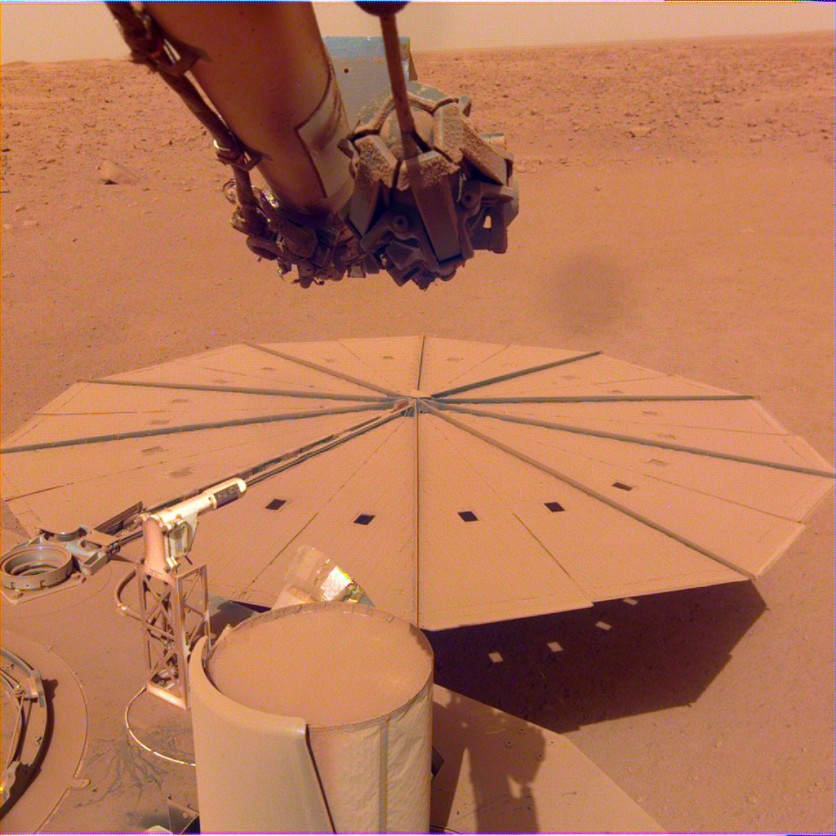NASA's mission to study the Martian surface, titled the Interior Exploration using Seismic Investigations, Geodesy and Heat Transport, simply referred to as InSight, is due for slow and certain death by the end of the year. The robotic lander itself, first sent to Mars in 2018, had furthered our understanding of the red-hued planet in immense ways, most recently witnessed in its observation of the largest marsquake in recorded history at 5.0 magnitude, analyzations of which have helped humans to determine the diameter of Mars' core and thickness of its crust, as but only a few examples.
But, it seems these renowned scientific discoveries are due for an untimely and dusty end before next year, as NASA signals the imminent demise of its machine. Due to the buildup on the InSight lander's solar panels, power to the machine's various necessary instruments is losing efficiency, thus leading the space organization to call it a means to an end. NASA will not be turning on any of said instruments after May, as well as the culmination of all science operations by June 20.

InSight's solar panels are outputting energy at a level of about 10 percent from their original production nearly three years prior. Its current area of operations on Mars, Elysium Planitia, is likewise slated for a dust-filled forthcoming season, as reported by the InSight team, who considered the news an inevitable death blow to its future plans. One inkling of hope lies within a potential type of whirlwind only capable on the surface of Mars, aptly called a dust devil, but the team is uncertain of its potential.
"We've been hoping for a dust cleaning like we saw happen several times to the Spirit and Opportunity rovers. That's still possible, but energy is low enough that our focus is making the most of the science we can still collect," said InSight's principal investigator at NASA's Jet Propulsion Laboratory, Burce Banerdt in a blog posted by JPL.
The team has utilized other somewhat sophisticated methods to clean the dust off of InSight's solar panels. The main among these ways was to pour dust itself next to the solar panels using the lander's arm to create a slight gust that would knock off the excess buildup. Still, given Mars' incredibly harsh environment and the uncertainty in its landscape, such methods are becoming more power-hungry and cost deficient in keeping up.
In the aforementioned blog post, NASA explains that its "team expects that around December, power will be low enough that one day InSight will simply stop responding." For its last remaining month of scientific service, JPL will situate the bot's arm in a so-called retirement pose, which will see it in a resting position. Given the enormity of its marsquake readings, which has made a total of 1,300 measurements so far, InSight's onboard seismometer will be the last of its instruments to be turned off.
ⓒ 2025 TECHTIMES.com All rights reserved. Do not reproduce without permission.




